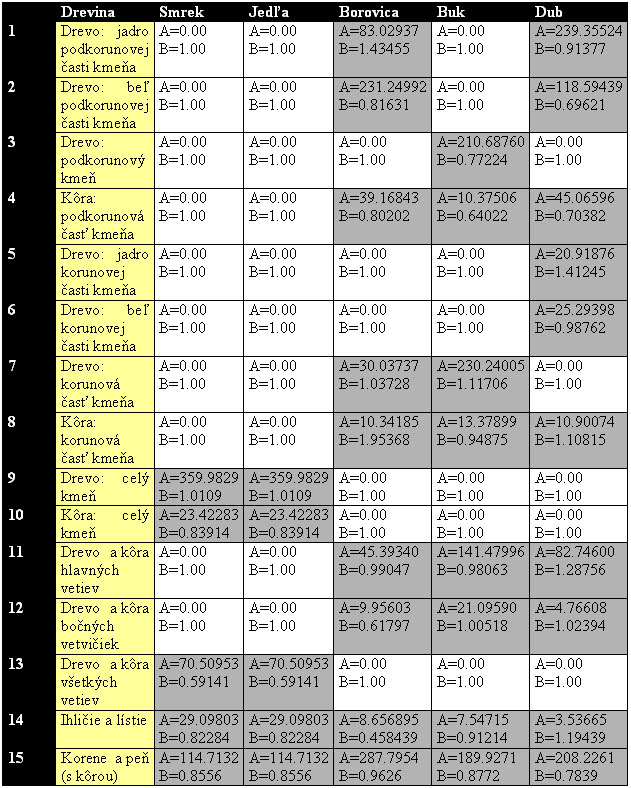Dry matter biomass of a specific part of the tree given in kilograms was derived from the miscellaneous data material and is calculated using the allometric equation:
Biomass = A . vHSKB . Ired
where vHSK is the volume of the timber to the top of 7 cm outside bark in m3, A and B are coefficients from Table 1 and Ired is the reduction factor applicable to dead trees from Table 2 (mainly related to leaves, needles, eventually branches, by default equal to 1).
Table 1 Coefficients of biomass allometric equation

Table 2 Reduction factor used in the biomass allometric equation

The biomass of the particular part of the tree is obtained as the sum of all essential components specified below by the numbers in the first column of Table 1:
-
Biomass of stem timber: 1+2+3+5+6+7+9
-
Biomass of stem bark: 4+8+10
-
Biomass of timber and bark of all branches: 11+12+13
-
Biomass of foliage (assimilatory organs): 14
-
Biomass of roots and a stump: 15
-
Total aboveground biomass: 1+2+3+4+5+6+7+8+9+10+11+12+13+14
-
Total tree biomass: 1+2+3+4+5+6+7+8+9+10+11+12+13+14+15










